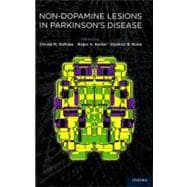
Note: Supplemental materials are not guaranteed with Rental or Used book purchases.
Purchase Benefits
What is included with this book?
| Contributors | p. xvii |
| Lesions Associated with the Classic Triad of Parkinsonian Motor Features | p. 3 |
| Lesions Associated with Motor Speech | p. 18 |
| Lesions Associated with Eye Movements | p. 50 |
| Olfactory Dysfunction in Parkinson's Disease and Related Disorders | p. 65 |
| Lesions Associated with Autonomic Dysfunction | |
| Swallowing Disorders and Drooling | p. 92 |
| Gastrointestinal Disorders | p. 103 |
| Othostatic Hypotension | p. 123 |
| Lesions Associated with Pain and Sensory Abnormalities | p. 141 |
| Lesions Associated with Sleep Disturbances | p. 167 |
| Lesions Associated with Depression and Apathy | p. 187 |
| Lesions Associated with Dyskinesias and the Dopamine Dysregulation Syndrome | p. 215 |
| Lesions Associated with Visual Hallucinations and Psychoses | p. 242 |
| Lesions Associated with Cognitive Impairment and Dementia | p. 261 |
| Systemic Manifestations of Parkinson's Disease | p. 288 |
| Index | p. 309 |
| Table of Contents provided by Ingram. All Rights Reserved. |
The New copy of this book will include any supplemental materials advertised. Please check the title of the book to determine if it should include any access cards, study guides, lab manuals, CDs, etc.
The Used, Rental and eBook copies of this book are not guaranteed to include any supplemental materials. Typically, only the book itself is included. This is true even if the title states it includes any access cards, study guides, lab manuals, CDs, etc.